- Guides
- B2B
-
Climbs
-
Climb Elbrus
- Elbrus individually
- Elbrus from the South, 9 days
- Elbrus from the South, 7 days
- Elbrus from the South in 1 day
- Elbrus from the North
- Elbrus Two Summits
- Elbrus Traverse South to North
- Elbrus Traverse North to South
- Elbrus "Cross" from South
- Elbrus "Cross" from North
- Kazbek+Elbrus
- Elbrus from the West
- Elbrus by helicopter
- Elbrus holidays, 9 days
- Elbrus holidays, 7 days
- Tinder Tour: Climbing Mount Elbrus
- Climb Elbrus from the South, 9 days with Sergey Baranov
- Under 5000 m
- 5000+ meters
- 6000+ meters
- 7000+ meters
- 8000+ meters
-
Climb Elbrus
-
Trekking
-
See 8000m
- K2 base camp
- Everest base camp
- Everest base camp via Gokyo
- Everest base camp in a week
- Annapurna circuit
- Trekking the Manaslu Circuit
- Trekking to Kanchenjunga Base Camp
- Trekking to Kanchenjunga Base Camp (Short)
- Trekking to Kanchenjunga Base Camp (India)
- Trekking to Makalu Base Camp
- Trekking to Annapurna BC
- South America
- Asia
- Africa
- Russia
- Europe
-
See 8000m
-
Adventures
-
Africa
- Tour to Morocco for New Year
- Morocco: Toubkal and the mysteries of the Sahara
- Tour to Eritrea: Dahlak Archipelago and Rashaida Nomads
- Tour to Rwanda: Mountain Gorillas and Mount Bisoke
- Ethiopia
- Tour to Uganda: Queen Elizabeth National Park and Mountain Gorillas
- Safari Tanzania
- Safari Uganda
- Tour to Zimbabwe and South Africa: Victoria Falls, Cape Town, and Cape of Good Hope
- Namibia
- Safari Kenya
- Tour to Botswana: Okavango Delta and Chobe National Park
- South America
- Asia
-
Africa
- Ski-touring
- VIP
- Useful
- About
Climb Matterhorn
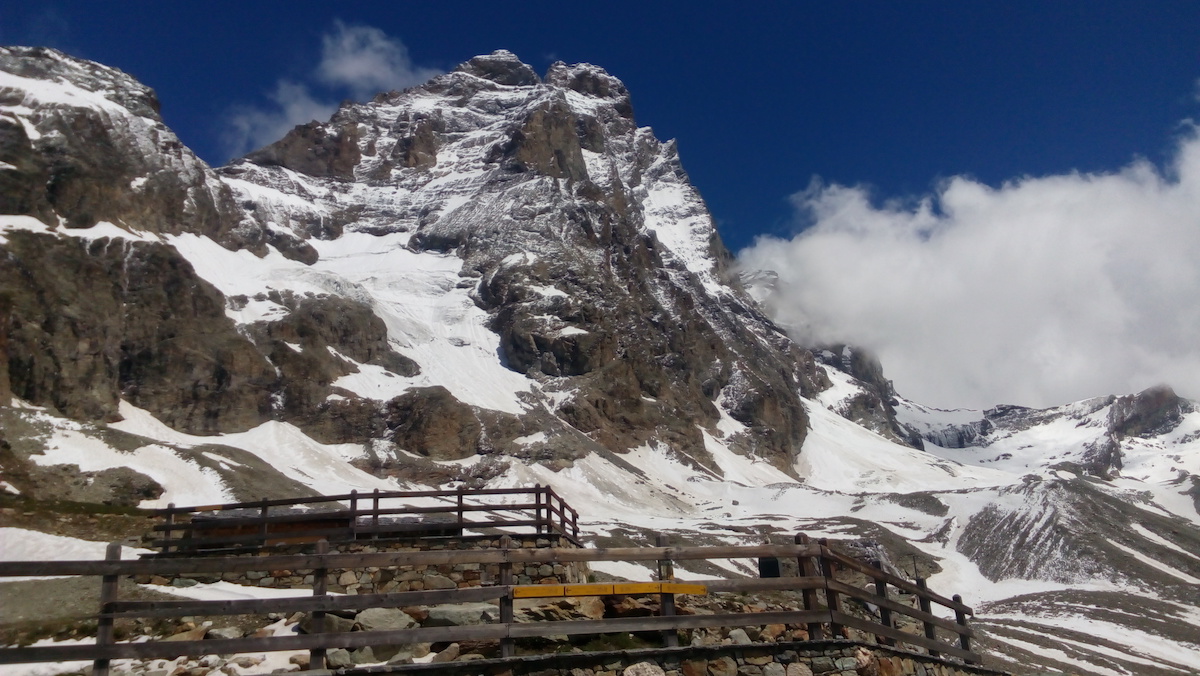
4490 $
Why to go with us?
Temporarily unavailable
According to the safety requirements of International Association of Mountain Guide Associations (IFMGA), during this program one guide can work with only one participant. It is perfectly in line with our concept of security on the routes of such complexity level.
Generally, we can offer Matterhorn ascent from any side, but we decided to conduct our regular tours from the Italian side.
Matterhorn ascent is usually a logical continuation of Mont Blanc ascent. There is a lot in common: no living in tents during the tour, comfortable accommodation and a minimal amount of equipment in a backpack, along with quite interesting peaks and not the easiest route. Technically Matterhorn ascent is rather complex, it is not a pedestrian route, guides-clients ratio in our Matterhorn ascent programs is always strictly 1:1, as we do not consider all other options to be safe enough. Despite not very high altitude, acclimatization is vital, as any delay or slow movement along the route is very undesirable, and the relief is not very suitable for any physical assistance by other person.
НаверхAbout the tour
The very idea of climbing the Matterhorn draws a majestic peak in our imagination. The Matterhorn is considered one of the most popular mountains in the world. And, above all, because of its special shape.
Mattehorn is located on the border of countries such as Italy and Switzerland. To be more precise, it is in the heart of the majestic Alps. On the Swiss side, at the very foot of the Mattehorn, there is one of the most popular nearby resorts – the village of Zermatt. From this place there is a truly impressive view of the majestic mountain. The ascent of the Matterhorn from Switzerland also begins from here.
The first ascent of the Matterhorn was carried out back in 1865. Since that time, there have been more and more people who want to climb Mattehorn. At the same time, it must be said that climbing the mountain is not so easy. There are no routes available for everyone here. Therefore, before heading to the top of the Matterhorn, it is important to be prepared both mentally and physically.
We have developed this program taking into account all the difficulties that each climber will need to overcome on the way to the desired peak. It is individual, that is, one guide does not work with a group, but only with one climber. If the climbers have sufficient experience, then, as an option, the guide can work with two clients. This approach is not accidental, because when climbing the Matterhorn, even for an experienced guide, it is problematic to ensure a comfortable and at the same time fast transition of a rather large group of climbers.
Before climbing the Matterhorn, participants will conduct classes on the terrain simulating all the nuances of the Matterhorn route. It is difficult to overestimate the importance of correctly assessing the skills of participants — climbing the Matterhorn is noticeably more difficult than climbing Mont Blanc and other popular peaks of similar height. At the same time, proper acclimatization will allow you to move along the route quickly enough, which means to increase the safety of climbing the Matterhorn.
After the training stage, the climbers will have to move to the town of Bray Cervinia, and after a short rest, climb to the mountain shelter, which is located near the beginning of the Matterhorn climbing route.
This program should be considered as one of the possible options. Depending on the weather conditions, the state of the route, the actual level of training of the participant, as well as the availability of free places in mountain huts, it can be adjusted.The very idea of climbing the Matterhorn draws a majestic peak in our imagination. The Matterhorn is considered one of the most popular mountains in the world. And, above all, because of its special shape.
Mattehorn is located on the border of countries such as Italy and Switzerland. To be more precise, it is in the heart of the majestic Alps. On the Swiss side, at the very foot of the Mattehorn, there is one of the most popular nearby resorts – the village of Zermatt. From this place there is a truly impressive view of the majestic mountain. The ascent of the Matterhorn from Switzerland also begins from here.
The first ascent of the Matterhorn was carried out back in 1865. Since that time, there have been more and more people who want to climb Mattehorn. At the same time, it must be said that climbing the mountain is not so easy. There are no routes available for everyone here. Therefore, before heading to the top of the Matterhorn, it is important to be prepared both mentally and physically.
We have developed this program taking into account all the difficulties that each climber will need to overcome on the way to the desired peak. It is individual, that is, one guide does not work with a group, but only with one climber. If the climbers have sufficient experience, then, as an option, the guide can work with two clients. This approach is not accidental, because when climbing the Matterhorn, even for an experienced guide, it is problematic to ensure a comfortable and at the same time fast transition of a rather large group of climbers.
Before climbing the Matterhorn, participants will conduct classes on the terrain simulating all the nuances of the Matterhorn route. It is difficult to overestimate the importance of correctly assessing the skills of participants — climbing the Matterhorn is noticeably more difficult than climbing Mont Blanc and other popular peaks of similar height. At the same time, proper acclimatization will allow you to move along the route quickly enough, which means to increase the safety of climbing the Matterhorn.
After the training stage, the climbers will have to move to the town of Bray Cervinia, and after a short rest, climb to the mountain shelter, which is located near the beginning of the Matterhorn climbing route.
This program should be considered as one of the possible options. Depending on the weather conditions, the state of the route, the actual level of training of the participant, as well as the availability of free places in mountain huts, it can be adjusted.
Physical training and experience:
To successfully complete all stages of the program, you must have good physical fitness. Pre-training is welcome and will make climbing easier.
Be ready for a 10-12-hour ascent with a small backpack weighing about 5 kg and climbing up to 1500m.
Experience of technically simple ascents 2A-2B;
Experience of climbing or mountain hikes to heights of 3500 meters and above;
Experience climbing in mountain boots on rocks;
Experience climbing in crampons on rocks;
Experience of overcoming ice slopes with a steepness of 25°-35°.
The program of guided ascent to Matterhorn.
Day 1. Arrival of participants. The most convenient airport for arrival is located in Geneva. Alternatively, you can consider the airports of Milan and Turin. Then transfer to Courmayeur. Dinner and instructing the group. Accommodation in a hotel/hotel/apartment.
Day 2. Preparation for the upcoming ascents, acclimatization and fitting of equipment.Meeting with the guide in the morning. Checking equipment, solving formalities. Transfer to the Skyway cable car.
We go up to the hut of Turino (3375m). Then exit to the glacier and climb to the small rocky peak of Eigvi d’Entre (Aiguille d’entreves, 3600m). From the top, in good weather, there is a wonderful view of Mont Blanc. Descent to Courmayeur.
Total walking time: 4-5 hours
Climb on foot: 575m
Height drop on foot: 575m
Day 3. Acclimatization exit and classes near the hut “Guides Cervino” (Guide del Cervino, 3489m).Transfer to the Valtournenche Valley to the foot. Matterhorn town of Breuil-Cervinia. From here, take the cable car to the upper station “Plateau Rosa”. The hut is a 5-minute walk from the cable car. After accommodation in the hut, the acclimatization exit is up to 3900m. Preparing for the next day. Overnight in a mountain hut.
Total walking time: 3-4 hours
Climb on foot: 411m
Height drop on foot: 411m
Day 4. Climbing the Breithorn (Breithorn, 4146m). Descent and return to Courmayeur. Training day before the main ascent of the Matterhorn. Early exit and ascent of the Brighthorn along the eastern ridge (semi-traverse of the massif). A technically interesting ascent as close as possible to the conditions of climbing the Matterhorn will allow you to test your capabilities and prepare as effectively as possible for the main goal of the program. Descent to the hut and then by cable car down to Cervinia. Transfer to Courmayeur.
Total walking time: 6-7 hours
Climb on foot: 775m
Height drop on foot: 675m
Day 5. Rest day. It can also be used as a backup day in case of bad weather and unforeseen circumstances.
Day 6. Transfer to Zermatt and transfer to Hernley Hut.
After breakfast, transfer to Zermatt (Zermatt, Switzerland), from where we will climb the cantata road to the station “Schwarzsee” (Schwarzsee, 2552m). Here we will start our walking part of the way to the Hernli hut (Hörnlihütte, 3260m). Overnight in a mountain hut.
Total walking time: 2-3 hours
Climbing height on foot: 708m
Height drop on foot: —
Day 7. Climbing the Matterhorn (Matterhorn, 4478m). Descent to Zermatt.
The most responsible and difficult day of the program. We go out at five cheers, in fact in the dark, and immediately up the difficult rocks. A difficult and complex ridge, snow may lie on the rocks in places. However, the most problematic part of the ascent is the summit tower. It is very important to calculate the forces correctly, because after the top there will be at least a long descent down.
Upon returning to the hut. Hernley has a short rest and then down to Zermatt. Transfer to Courmayeur.
Total walking time: 10-12 hours
Climb on foot: 1218m
Height drop on foot: 1926m
Day 8. Transfer to Geneva. Plane back home.
Not included in the cost of Matterhorn climb:
- The road to Courmayeur and back;
- Accommodation in Courmayeur;
- Meals in Courmayeur. In populated areas in restaurants or cafes;
- Lunch during the transitions. During the day trips and ascents, a light snack (organized independently), there is an opportunity to buy lunch in mountain huts;
- Insurance covering the cost of rescue work in the mountains;
- Equipment rental;
- Tips by a mountain guide (200 Euros per group);
- Any costs caused by the changing of the programs.
Insurance
НаверхEquipment
Скачать PDFSpecial clothing
- 1st layer (top and bottom): thermal underwear
- 2nd layer (top): fleece, windstopper or anthological jackets
- 2nd layer (bottom): softshell pants for mountaineering
- 3rd layer (top and bottom): wind- /moisture-proof clothing (jacket and pants) suitable for mountaineering
- 4th layer (upper): lightweight down or similar synthetic jacket for temperatures up to -5°C
- Thick (warm) and medium-thick socks
- Thin gloves windproof gloves
- Warm gloves for temperatures up to -5°C
- Hat
- Buff, bandana, cap or light cap
Personal item
- Flask and/or thermos with a volume of 1L
- Headlamp
- Personal mini first aid kit (for example: a patch for corns, cold remedies on the lips)
- Sunglasses with UV protection factor 3 or 4
- Sunscreen and hygienic lipstick with UV protection factor 50
- Insurance against accidents in the mountains
For the hut
- Personal hygiene products
- Hygienic liner in a sleeping bag made of silk or cotton
Climbing equipment
- Backpack with a volume of 35-40L
- Alpine boots for climbing 3500-4500m with the possibility of fixing semi-automatic
- crampons
- Safety system
- Helmet
- crampons with an anti-clip
- Ice axe
The guide will have with him public climbing equipment (rope, loops, braces, ice drills, stoppers, etc.), as well as a first aid pharmacy and means of communication
You may also like
-
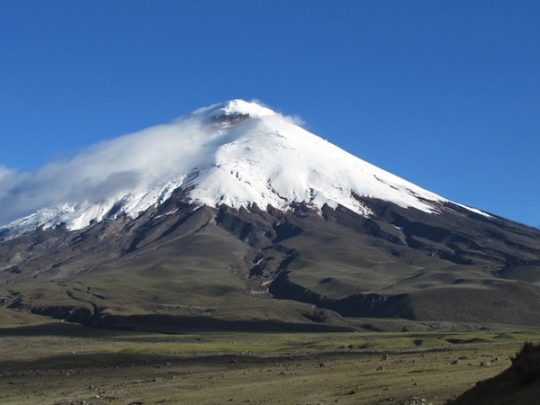 3,900 $
3,900 $Climb Chimborazo and Cotopaxi
- Height (m)
- 5897, 6384
- Duration
- 11 days
- Difficulty
- Moderate
- Continent
- South America
- Children
- From 14 years old
- Accomodation
- Hotels only
-
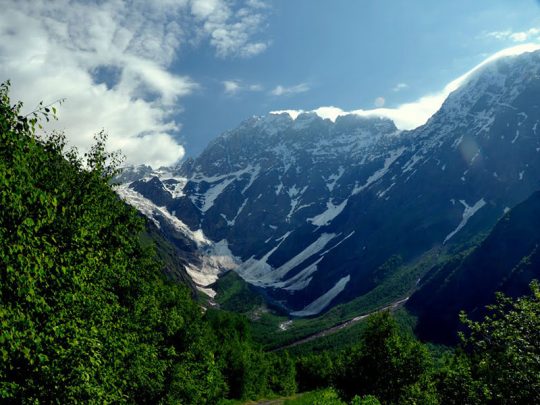 5,700 $
5,700 $Climb Dykh-Tau
- Height (m)
- 5204
- Duration
- 13 days
- Difficulty
- Above average
- Continent
- Europe
- Children
- No
- Accomodation
- There are tents
-
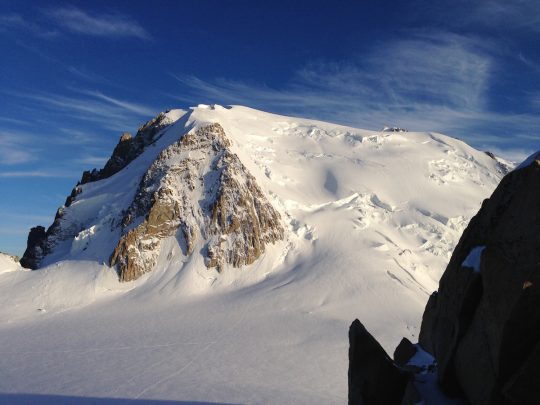 2,690 $
2,690 $Climb Mont Blanc
- Height (m)
- 4810
- Duration
- 7 days
- Difficulty
- Moderate
- Continent
- Europe
- Children
- From 14 years old
- Accomodation
- Without tents
-
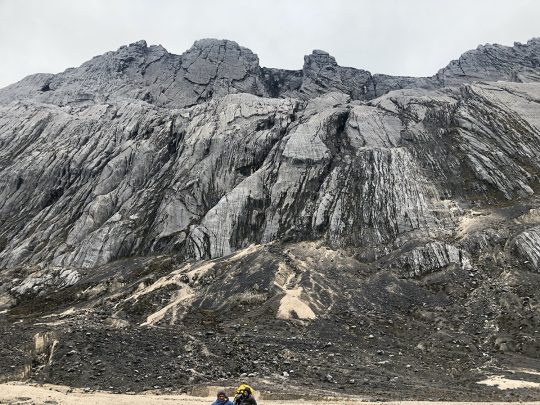 19,000 $
19,000 $Climb Carstensz
- Height (m)
- 4884
- Duration
- 7 days
- Difficulty
- Average
- Continent
- Australia
- Children
- From 14 years old
- Accomodation
- There are tents